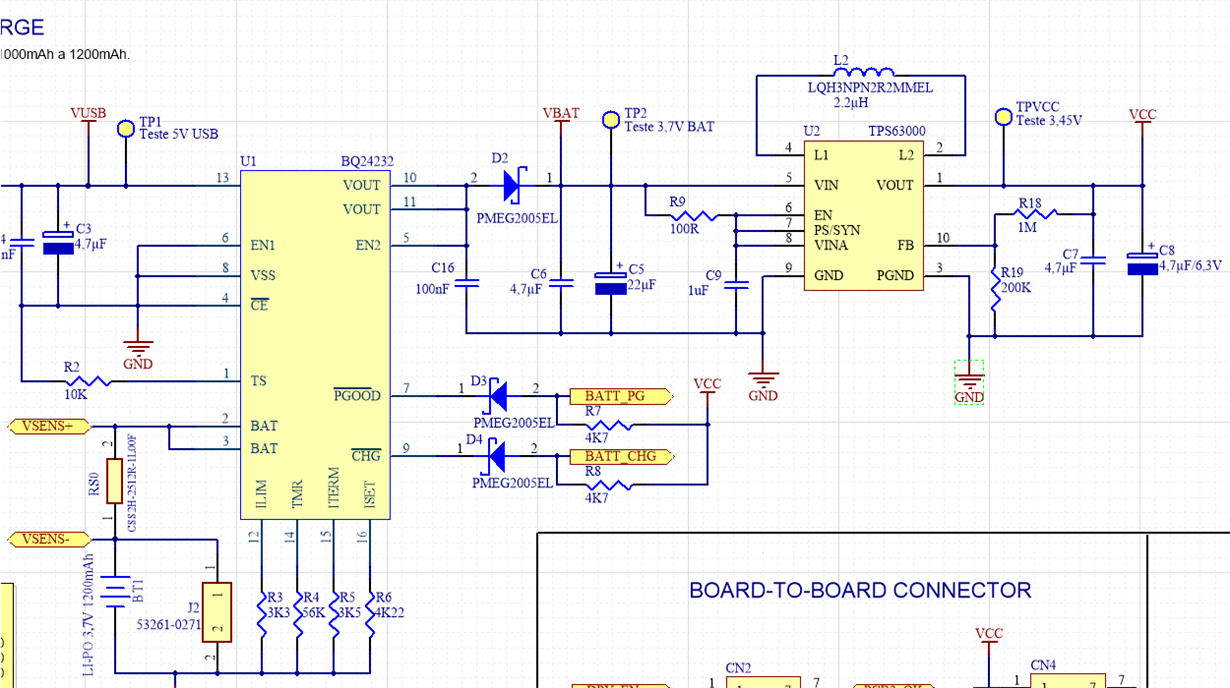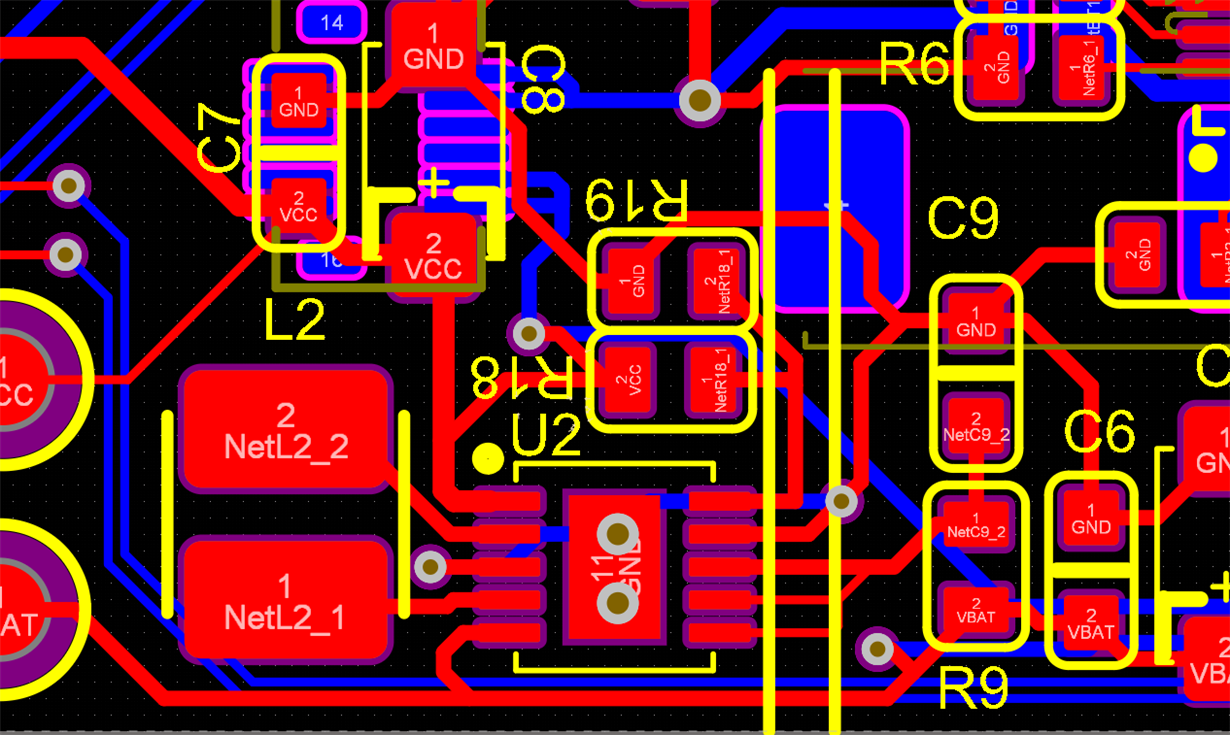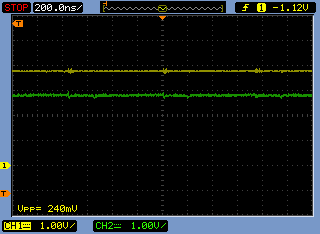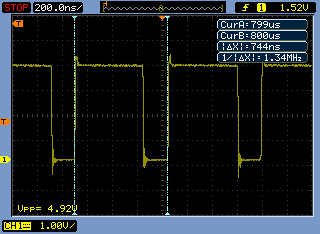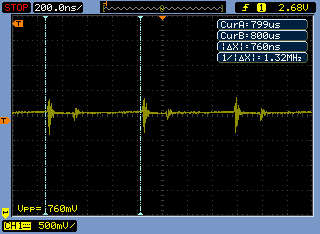We are using the TPS63000 to regulate the circuit supply voltage around 3.45V as shown in the image below:
PCB layout:
The supply voltage comes from a 3.7V LIPO battery or a 5.0V USB port.
The circuit was designed following the guidelines of the datasheet (SLVS520C –MARCH 2006 – REVISED OCTOBER 2015).
When feeding the circuit with 2.6V, even with no load at the output, the TPS6300 drains 160mA and heats up. Above that tension, it heats up so much that it ends up disarming.
The output voltage is stable at 3.58V for input voltage from 2.0V to 2.9V. When the input voltage exceeds this range, the output voltage starts to rise and the TPS heats up even more.
INPUT=GREEN(2,8V) OUTPUT=YELLOW(3,6V)
INDUCTOR FREQUENCY.
INPUT RIPPLE DUE TO TPS63000 CYCLE.



